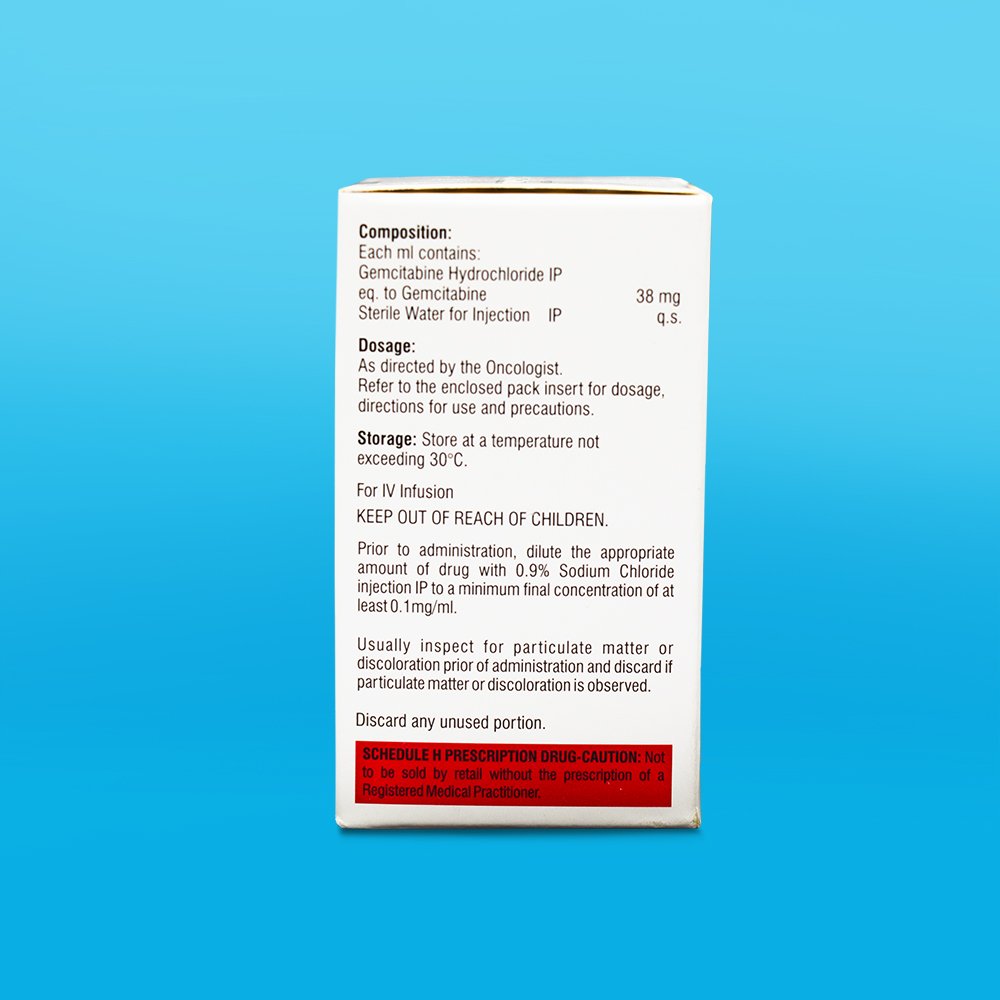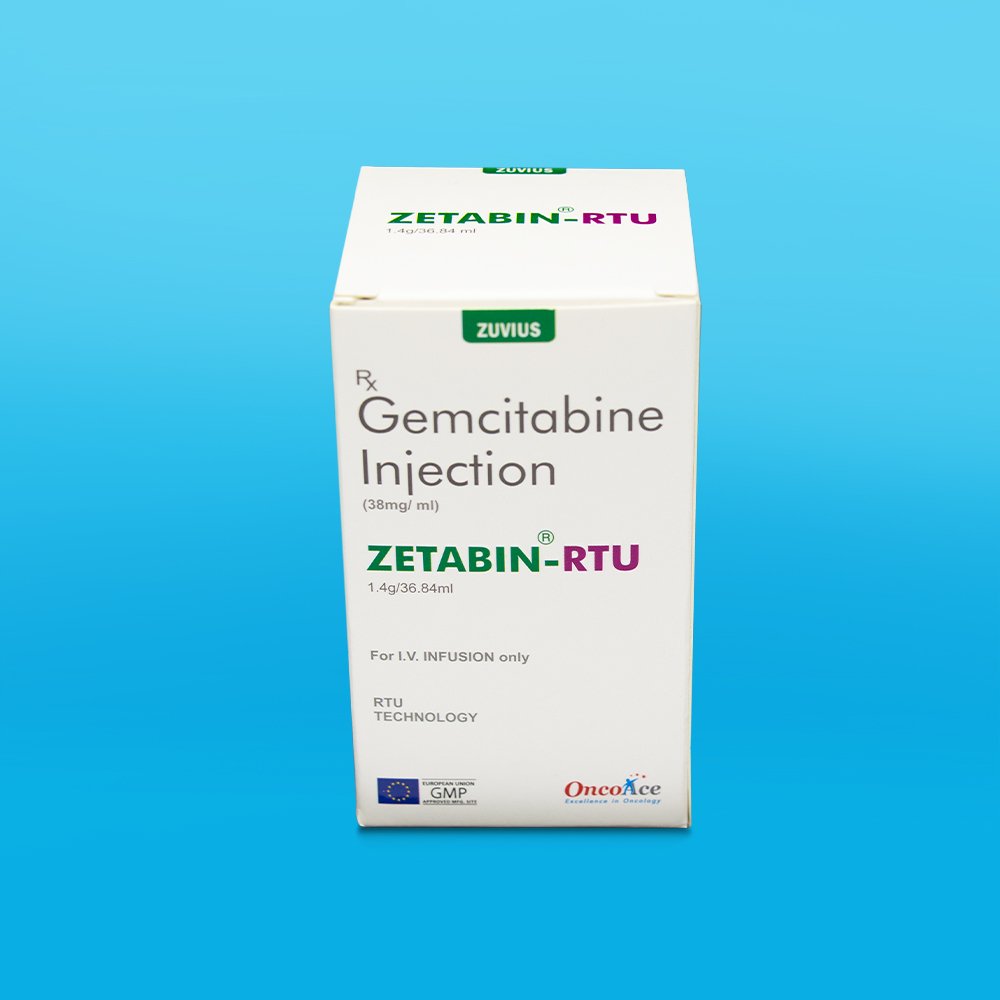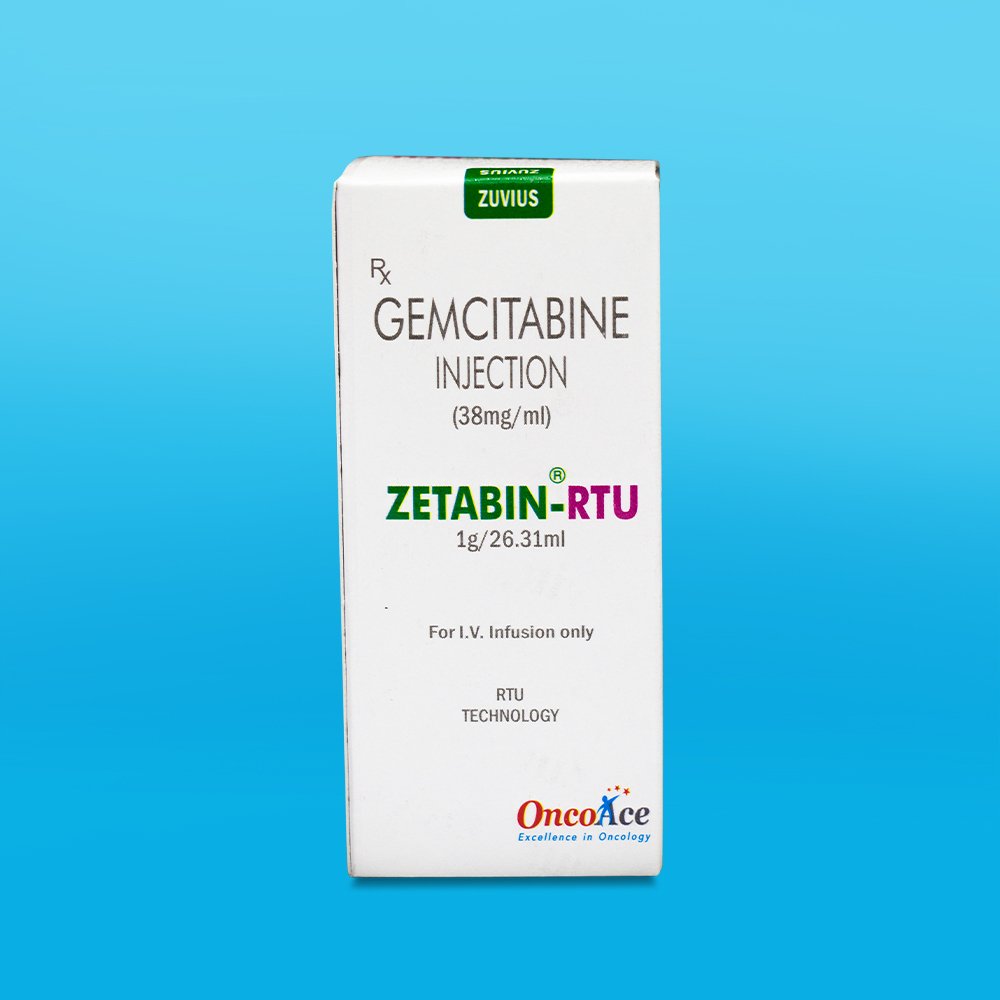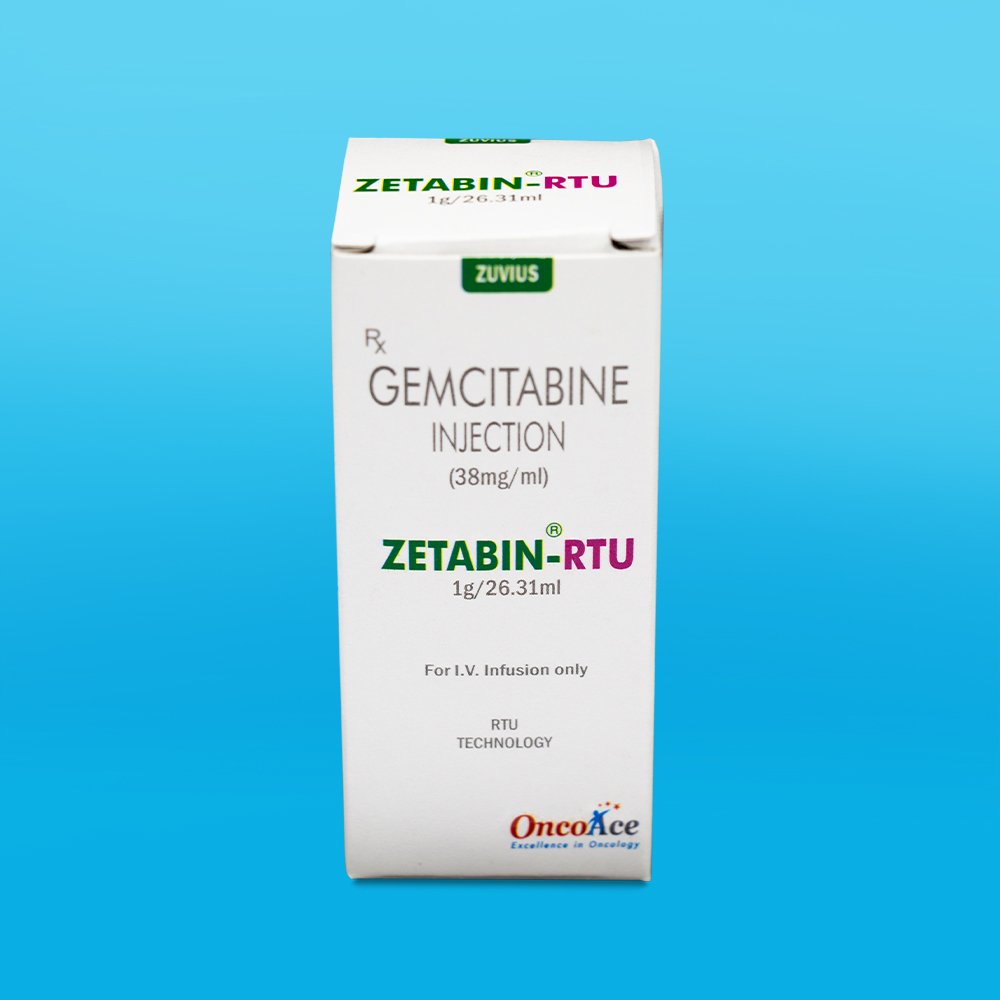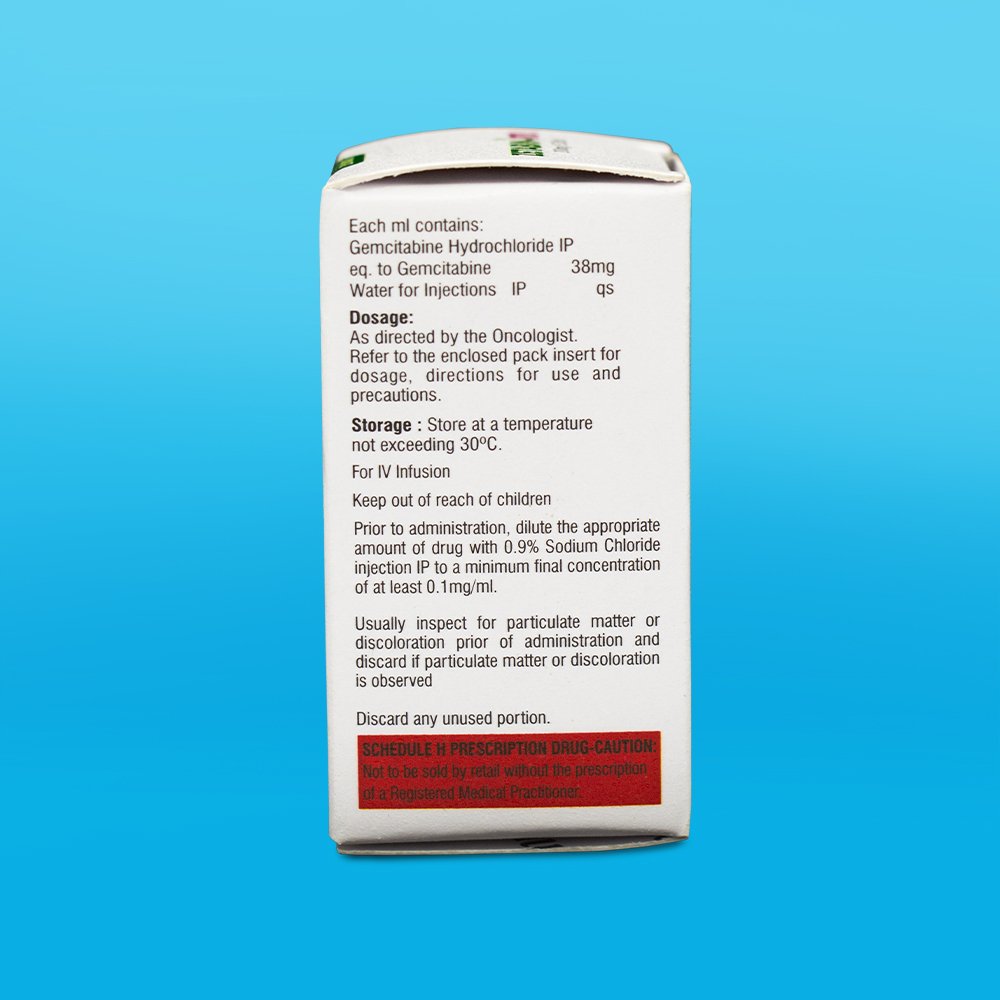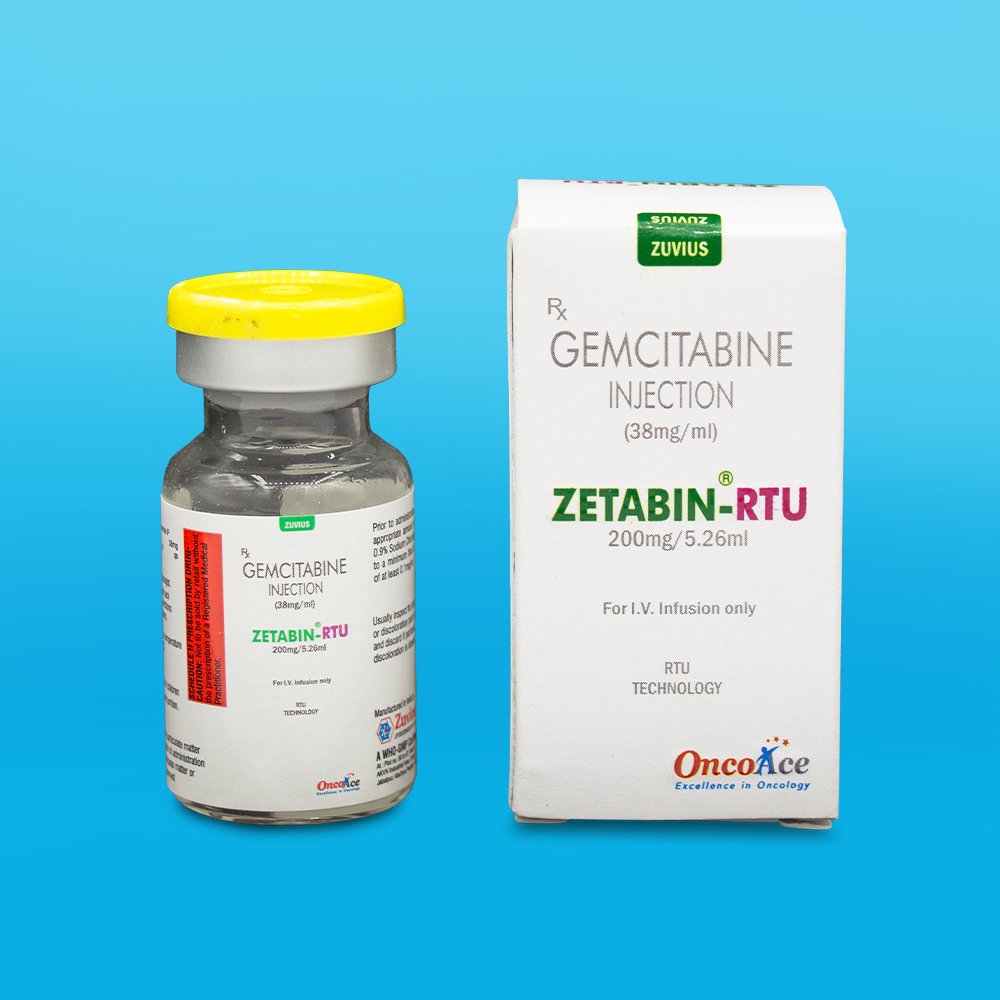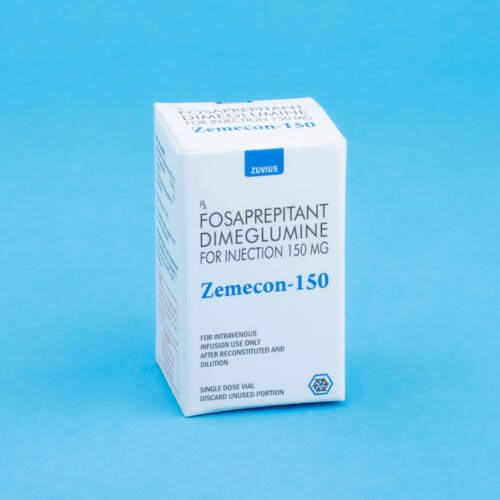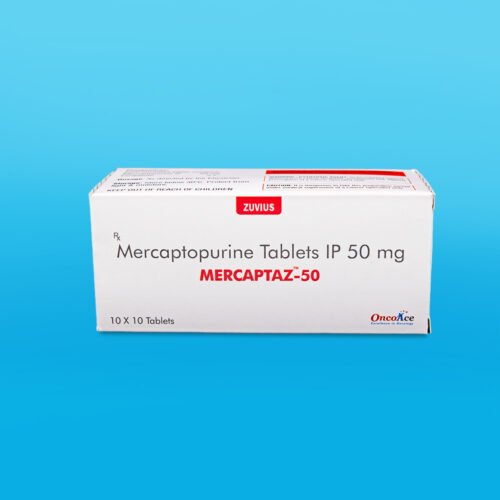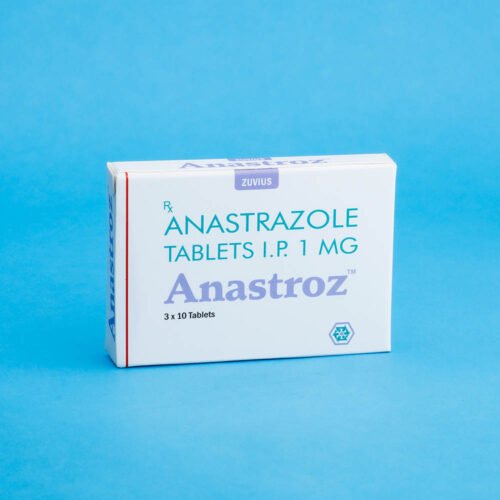Zetabin RTU- Gemcitabine RTU Inj
Gemcitabine RTU
Strength: 200 mg / 1gm / 1.4gm
Pack Size: 1 vial
Drug Class: Anthracyclines and related substances
Dosage and Administration:
Ovarian Cancer
Recommended Dose And Schedule
The recommended dose of Gemcitabine HCl is 1000 mg/m² as an intravenous infusion over 30 minutes on Days 1 and 8 of each 21-day cycle, in combination with carboplatin AUC 4 intravenously after Gemcitabine HCl administration on Day 1 of each 21- day cycle.
Breast Cancer
Recommended Dose And Schedule
The recommended dose of Gemcitabine HCl is 1250 mg/m² intravenously over 30 minutes on Days 1 and 8 of each 21-day cycle that includes paclitaxel. Paclitaxel should be administered at 175 mg/m² on Day 1 as a 3 hour intravenous infusion before Gemcitabine HCl administration.
Non-Small Cell Lung Cancer
Recommended Dose And Schedule
Every 4-week schedule
The recommended dose of Gemcitabine HCl is 1000 mg/m² intravenously over 30 minutes on Days 1, 8, and 15 in combination with cisplatin therapy. Administer cisplatin intravenously at 100 mg/m² on Day 1 after the infusion of Gemcitabine HCl
Every 3-week schedule
The recommended dose of Gemcitabine HCl is 1250 mg/m² intravenously over 30 minutes on Days 1 and 8 in combination with cisplatin therapy. Administer cisplatin intravenously at 100 mg/m² on Day 1 after the infusion of Gemcitabine HCl
Cold Storage: no
Gemcitabine for injection is a nucleoside metabolic inhibitor that exhibits antitumor activity. Gemcitabine HCl is 2´-deoxy-2´,2´-difluorocytidine monohydrochloride (β-isomer).
The structural formula is as follows:
 |
The empirical formula for gemcitabine HCl is C9H11F2N3O4 • HCl. It has a molecular weight of 299.66.
Gemcitabine HCl is soluble in water, slightly soluble in methanol, and practically insoluble in ethanol and polar organic solvents.
Gemcitabine HCl is supplied in a sterile form for intravenous use only. Vials of Gemcitabine HCl contain either 200 mg or 1 g of gemcitabine HCl (expressed as free base) formulated with mannitol (200 mg or 1 g, respectively) and sodium acetate (12.5 mg or 62.5 mg, respectively) as a sterile lyophilized powder. Hydrochloric acid and/or sodium hydroxide may have been added for pH adjustment.
Gemcitabine is indicated for the treatment of locally advanced or metastatic bladder cancer in combination with cisplatin.
Gemcitabine is indicated for treatment of patients with locally advanced or metastatic adenocarcinoma of the pancreas.
Gemcitabine, in combination with cisplatin is indicated as first line treatment of patients with locally advanced or metastatic non-small cell lung cancer (NSCLC). Gemcitabine monotherapy can be considered in elderly patients or those with performance status 2.
Gemcitabine is indicated for the treatment of patients with locally advanced or metastatic epithelial ovarian carcinoma, in combination with carboplatin, in patients with relapsed disease following a recurrence-free interval of at least 6 months after platinum-based, first-line therapy.
Gemcitabine, in combination with paclitaxel, is indicated for the treatment of patients with unresectable, locally recurrent or metastatic breast cancer who have relapsed following adjuvant/neoadjuvant chemotherapy. Prior chemotherapy should have included an anthracycline unless clinically contraindicated.
Gemcitabine kills cells undergoing DNA synthesis and blocks the progression of cells through the G1/S-phase boundary. Gemcitabine is metabolized by nucleoside kinases to diphosphate (dFdCDP) and triphosphate (dFdCTP) nucleosides. Gemcitabine diphosphate inhibits ribonucleotide reductase, an enzyme responsible for catalyzing the reactions that generate deoxynucleoside triphosphates for DNA synthesis, resulting in reductions in deoxynucleotide concentrations, including dCTP. Gemcitabine triphosphate competes with dCTP for incorporation into DNA. The reduction in the intracellular concentration of dCTP by the action of the diphosphate enhances the incorporation of gemcitabine triphosphate into DNA (self-potentiation). After the gemcitabine nucleotide is incorporated into DNA, only one additional nucleotide is added to the growing DNA strands, which eventually results in the initiation of apoptotic cell death.
- Keep GEMCITABINE INJECTION out of reach of children
PREGANANCY
GEMCITABINE INJECTION is not recommended for use in pregnancy.
GEMCITABINE INJECTION is not recommended for use in breastfeeding women.
Do not drive or operate any machines if you feel sleepy after receiving GEMCITABINE INJECTION
Do not consume alcohol during the treatment with GEMCITABINE INJECTION as it can make you feel sleepy.
GEMCITABINE INJECTION should be used with caution in patients who had or have any kidney diseases. Contact your doctor before receiving it.
GEMCITABINE INJECTION should be used with caution in patients who had or have any liver diseases. Contact your doctor before receiving it.
Do not receive GEMCITABINE INJECTION if you are allergic to gemcitabine or any of the other ingredients of this medicine.
GEMCITABINE INJECTION should be used with caution in patients who had or have any heart or vascular diseases. Contact your doctor before receiving it.
Before receiving GEMCITABINE INJECTION, inform your doctor if you:
- Had or are about to have radiotherapy
- Have been vaccinated recently
Use in paediatrics:
GEMCITABINE INJECTION is not recommended for use in children and adolescents (under 18 years of age) due to insufficient data on safety and efficacy. Consult your child’s doctor for advice.
Use in geriatrics:
No dose adjustment of GEMCITABINE INJECTION is required for elderly patients, however, consult your doctor before receiving it.



